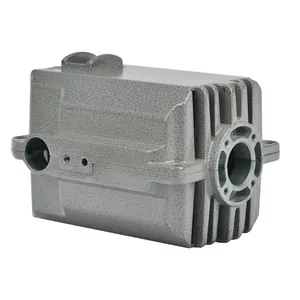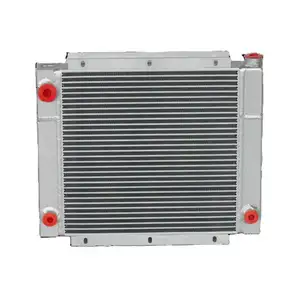

Custom Foundry Precision Adc12 Aluminum Zinc Alloy Auto Radiator Parts Die Casting Delivering Top-Notch Quality


Aluminum Brazed Plate Bar Fin Water Air Dryer Radiator Heat Exchanger Autos Car Hydraulic Oil Compressor Cooler Core Intercooler






















A radiator core is a part of the radiator that lies between the tanks. The radiator core is made of tubes that carry coolant and fins. The coolants and fins transfer heat from the tubes to the air that passes through the core. The fins in a radiator core are made from either a combination of brass and copper, plastic or aluminum, but the tank is made solely from plastic material. A radiator core support structure is a metal frame that is used in holding a condenser and cooling fan system and to protect the radiator from getting damaged. It secures the radiator under the hood of the car and helps reduce the damage that can be caused to the radiator by an impact in case of an accident.
Radiators play a significant role in cooling engines and heating spaces, such as in homes and offices, to make them warm and comfortable. There are two types of radiator core, aluminum radiator core and copper radiator core. Aluminum materials are thinner and can accommodate added wider tubes in the same radiator without adding size or weight to the original radiator. The wider tubes create sufficient airflow that makes cooling efficient. On the other hand, Copper is known as a good conductor than aluminum. Therefore, aluminum radiators are capable of cooling an engine faster than copper. Even though copper radiator core tends to have a long lifespan, replacement radiator cores of the same, require space larger than the availed space.
Damage to the radiator or the decision to upgrade the radiator may prompt the replacement of a radiator. A radiator core replacement may occur when leaks, rust, overheating, or blockage occur, and repair isn’t a viable option. A radiator core support mounting kit may come in handy to ensure it is placed sturdily. Going for a bigger car radiator has a lot of advantages, as it has a large surface area that will allow the flow of coolant and, therefore, will cool the engine faster, bearing in mind that it fits in the space provided for in the vehicle and leaves space for appropriate airflow.
A radiator that is made of aluminum and has more rows will offer the desired performance. Since coolants flow through tubes and over fins, the more rows and corresponding tubes the radiator has, the faster the cooling system it will provide. Crossflow radiators have more cooling efficiency and can fit in smaller spaces. You can identify them by their fins that run from left to right, with coolant traveling from the inlet to the outlet. Crossflow radiators cannot fit in the space of downflow ones as they run from top to bottom. Positioning a radiator affects its efficiency, and in homes under the window or a place that maximizes the floor-to-wall space can work well. However, avoid placing the radiator behind furniture, full-length curtains, and exterior walls to maximize efficiency. Search radiator core suppliers on Alibaba.com to find one that fits your needs or have it custom-made.